Search
Search Results

Article
Celtic Bronze Shields
The ancient Celts produced magnificent bronze shields in Iron Age Britain which were most likely for ceremonial purposes and display. Several fine examples have miraculously survived as evidence of the imagination, skill, and artistry of...
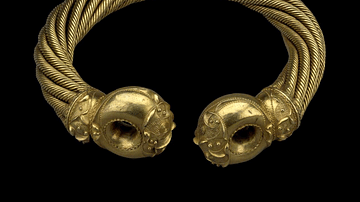
Image
Snettisham Great Torc
The Snettisham Great Torc. Part of the Snettisham burial hoard found in Norfolk, England. Celtic, gold alloy, 150-50 BCE. Diameter 56 cm. (British Museum, London)
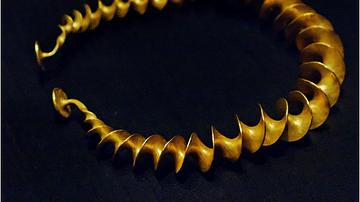
Image
Twisted Torc of the Stirling Hoard
This twisted torc is one of four Stirling Hoard torcs discovered in Stirlingshire, Scotland in 2009. The torcs had been buried shallowly in a Roundhouse near current day Blair Drummond. It is unclear whether they were buried as an offering...
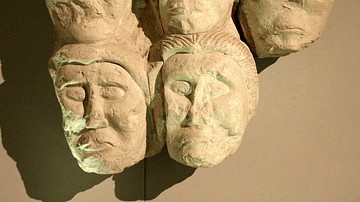
Article
Sacred Sites & Rituals in the Ancient Celtic Religion
In the religion of the ancient Celts who lived in Iron Age Europe from 700 BCE to 400 CE, certain natural sites like springs, river sources, and groves were held as sacred. These places, as well as some urban sites, often had purpose-built...
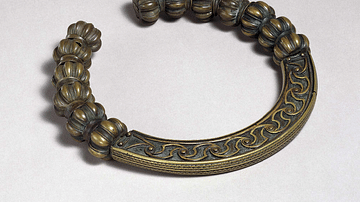
Image
Lochar Moss Torc
The Celtic Lochar Moss torc from Dumfries and Galloway, Scotland. Copper alloy, 1st-2nd century CE. Diameter: 16.5 cm. (British Museum, London)
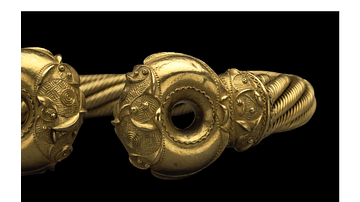
Image
Snettisham Great Torc Detail
A detail of the Snettisham Great Torc. Part of the Snettisham burial hoard found in Norfolk, England. Celtic, gold alloy, 150-50 BCE. Diameter 56 cm. (British Museum, London)
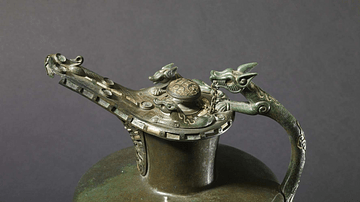
Article
Celtic Feasts
Feasts were an important part of ancient Celtic culture which marked important dates in the calendar and community successes. They were, too, an opportunity to display social status and, of course, eat and drink aplenty. Drunkenness and brawling...
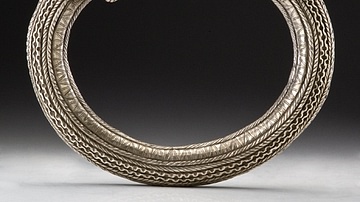
Image
The Trichtingen Torc
The Trichtingen torc, discovered near the town of that name in Germany. Perhaps dating to the 2nd century BCE, it is made of silver-plated iron. It measures 29.5 cm (11.5 in) in diameter and weighs 6.7 kilos (14.8 lbs). Landesmuseum Württemberg...
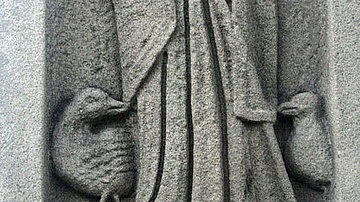
Definition
Hilda of Whitby
Hilda of Whitby (also known as Saint Hilda of Whitby, l. 614-680 CE) was the founder and abbess of the monastery at Whitby, Kingdom of Northumbria, Britain. She was a Northumbrian princess who converted to Christianity with the rest of the...

Definition
La Tène Culture
The La Tène culture (c. 450 - c. 50 BCE) is named after the site of that name on the northern shores of Lake Neuchâtel in Switzerland. It replaced the earlier Hallstatt culture (c. 1200 - c. 450 BCE) as the dominant culture of central Europe...